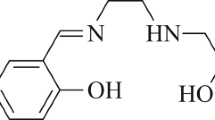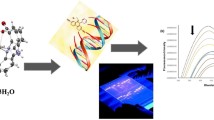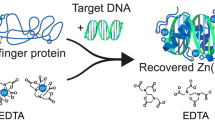Abstract
Intrinsic chemical properties of the zinc(II) ion in zinc enzymes have been investigated by the model of 1 :1 Zn2+-macrocyclic polyamine complexes, including Zn2+-1,5,9-triazacyclododecane ([12]aneN3) and 1,4,7,10-tetraazacyclododecane (cyclen). The physiologically most suitable pK a values for the Zn2+-bound H2O in enzymes were illustrated by the first model Zn2+-[12]aneN3 complex, which mimics the essential kinetic and thermodynamic roles of Zn2+ in carbonic anhydrase. The activation of proximate serine residues (in alkaline phosphatase) and activation of alcohols for hydride transfer to NAD+ (in alcohol dehydrogenase) were also mimicked by Zn2+-[12]aneN3 complexes. The functions of two zincs in dinuclear metallophosphatases were explained by a new dinuclear Zn2+-cryptate. For an aldolase type II model, a Zn2+-cyclen derivative showed facile enolate formation from a proximate carbonyl pendant under physiological conditions. The strong anion affinities, which Zn2+ intrinsically possesses, were exploited into novel selective nucleobase thymine (or uracil) recognition of Zn2+-cyclen complexes by the strong Zn2+-imido anion bond formation. The Zn2+-aromatic-pendant cyclen complexes selectively bind to T (or U) in single- and double-stranded DNA (or RNA). Thus, Zn2+ complexes act like molecular zippers to break A-T pairs in DNA, which was proven by various physicochemical measurements and DNA footprinting assays. These Zn2+ complexes showed some relevant biochemical and biological properties such as inhibition of transcriptional factor, TATA binding protein, or strong antimicrobial activities to Gram-positive bacterial strains.
Similar content being viewed by others
Author information
Authors and Affiliations
Additional information
Received: 23 December 1999 / Accepted: 29 December 1999
Rights and permissions
About this article
Cite this article
Kimura, E., Kikuta, E. Why zinc in zinc enzymes? From biological roles to DNA base-selective recognition. JBIC 5, 139–155 (2000). https://doi.org/10.1007/s007750050359
Issue Date:
DOI: https://doi.org/10.1007/s007750050359




